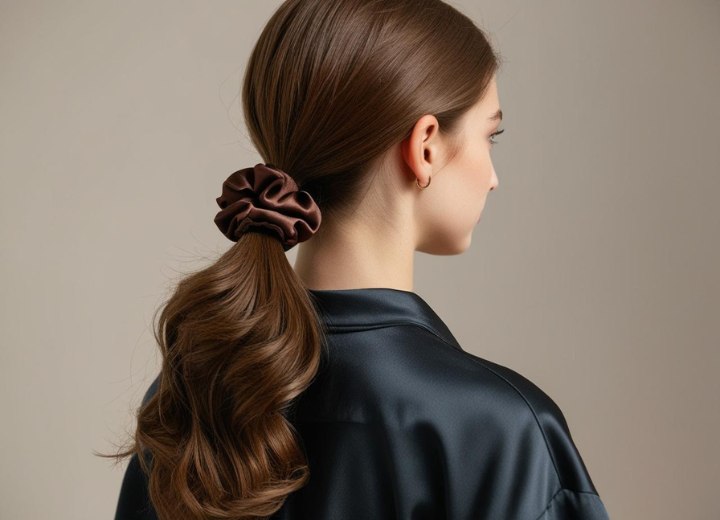Ponytail & Hair Loss

A: Yes, what you're describing is actually a recognized condition called traction alopecia. This happens when hair is repeatedly pulled in the same way over time, creating constant tension on the hair follicles. Regularly wearing tight ponytails, especially when parted in the same place day after day, can absolutely lead to hair thinning and loss along that part line.
While you might expect this kind of tension to cause discomfort - and it often does initially - our scalps can become desensitized to the pulling sensation over time. Many women who experience traction alopecia report they no longer feel the tightness that they once did, which means you could be causing damage without realizing it.
To address this issue, try making several changes to your hair routine:
First, consider loosening how you style your hair. Try gathering your ponytail at the nape of your neck with minimal tension, allowing your hair to fall more naturally rather than pulling it taut across your scalp. Even better, rotate between different hairstyles rather than wearing a ponytail every day. Leaving your hair completely down a few days a week can give strained follicles time to recover.

Try varying your part line regularly. If you always part your hair in exactly the same place, those follicles bear the brunt of UV exposure and styling stress. Simply switching between a center part, side part, or no part at all can distribute the strain and allow recovery time for different sections of your scalp.
It's worth noting that what looks like traction alopecia could sometimes be other forms of hair loss. Female pattern hair loss (androgenetic alopecia) often begins with widening of the part line, similar to what happens with traction alopecia. Other conditions like telogen effluvium (stress-related shedding), nutritional deficiencies, thyroid disorders, or autoimmune conditions can also cause hair thinning that might be mistaken for styling damage. If you've already noticed significant thinning or hair loss, consider consulting with a dermatologist who specializes in hair disorders.
©Hairfinder.com
See also:
How to make a poof ponytail
Will tying my hair back damage it?